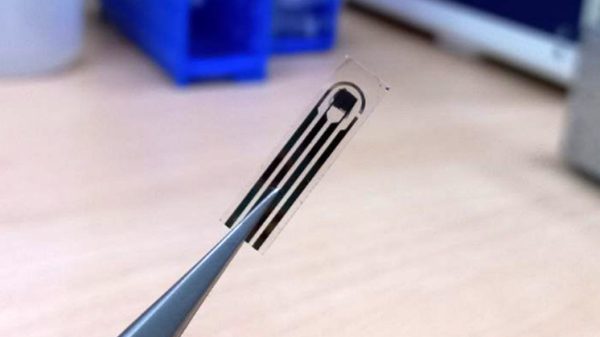The launch of the NHS Covid-19 app in England and Wales has exposed problems with the programme, some of which were known about in advance, and some of which will come as a surprise to both the government and users.
Although there were hundreds of thousands of downloads of the app in the first few hours on iPhones from the App Store and Android from the Google Play Store, simply accessing it caused a problem for many.
Some Android users reported accidentally downloading the trial version that had been made available in Newham, east London, and the Isle of Wight. That then led to a rash of one-star reviews on the Google Play Store, giving the app an average rating of just 1.5 stars.
Timeline What the UK government said on Covid testing
Show
Hide
1 September 2020
Boris Johnson
“Not only are we getting the pandemic under control, with deaths down and hospital admissions way, way down, but we will continue to tackle it, with local lockdowns and with our superlative test-and-trace system.”
9 September 2020
Boris Johnson
“NHS Test and Trace is doing a heroic job, and today most people get an in-person test result within 24 hours, and the median journey is under 10 miles if someone has to take a journey to get one … [To Keir Starmer] We make the tough calls – all he does is sit on the sidelines and carp.”
9 September 2020
Boris Johnson
[On the ‘moonshot’ proposal for mass, near-instant testing:] “We are hopeful this approach will be widespread by the spring and, if everything comes together, it may be possible even for challenging sectors like theatres to have life much closer to normal before Christmas.”
16 September 2020
Boris Johnson
“We don’t have enough testing capacity now because, in an ideal world, I would like to test absolutely everybody that wants a test immediately … Yes, there’s a long way to go, and we will work night and day to ensure that we get there.”
17 September 2020
Matt Hancock
“Of course there is a challenge in testing … We have sent tests to all schools to make sure that they have tests available. But of course I also recognise the challenges in getting hold of tests … Tests are available, even though it is a challenge to get hold of them.”
Was this helpful?
Thank you for your feedback.
On iPhones, the app is linked from the home page of the App Store, but users who search for “NHS Covid 19” were being sent to the New Zealand version of the app instead. The British app should have a hyphen in its name.
NHS workers expressed confusion early on in the day about how they were supposed to use the app, since bringing it to their workplace could result in them erroneously being marked as “exposed” despite wearing personal protection equipment. A Department for Health spokesperson said that staff in such a situation should pause the contact tracing feature, using a button on the app’s main screen, while at work to avoid that outcome.
Across the country, people with older phones – some bought as recently as 2018 – were discovering that the contact-tracing app would not work for them at all. The Apple and Google framework used by the government is restricted to those phones which are still receiving software updates, meaning the iPhone 6 and older models, as well as an unknown proportion of Android devices, cannot use the technology.
Ministers are confident that there are enough people with newer devices for a useful proportion of the country to download and use the app, however. Speaking to the BBC on Thursday morning, Matt Hancock, the health secretary, said that the “vast majority” of smartphones in the country would run the service.
According to Google, the app had more than a 100,000 downloads on Android alone as of 11am on Thursday morning. As that number starts to rise, the government will need to tackle the next set of problems: the lack of testing, and the risk of app-based “false positives”.
Owing to the “decentralised” nature of the app, users can only mark themselves as infectious if they have a positive test result, in order to prevent malicious attacks leading to thousands wrongly told to isolate. That means the app simply cannot perform to its best capacity without the government fixing the bottleneck of its testing capacity.
And once users do mark themselves as infectious, a proportion of those who receive a notification will actually have been outside the risk zone. In August, results from the early trials of the app suggested these false positives could be as high as 45% of the notifications sent by the app.
But experts say that may not be a huge problem. Unlike the manual test-and-trace program, an app notification does not require a person to enter isolation – complying with the warning is merely voluntary – and according to Oxford University’s Prof Christophe Fraser, who is advising the government on the programme, those notifications may still be useful even if they’re technically false.
“Yes, we want this intervention to have an impact, but for you as a user … if you receive an exposure notification, you therefore have the opportunity to protect your friends and loved ones,” Fraser said. “It’s a good time to be extra cautious. Perhaps you are infectious, in which case you can protect your friends and family; but perhaps you aren’t, in which case you still know that the infection is circulating in your local area, and you need to take extra precautions.
“Contact tracing is useful whether you’re infectious or not.”























































Свежие комментарии